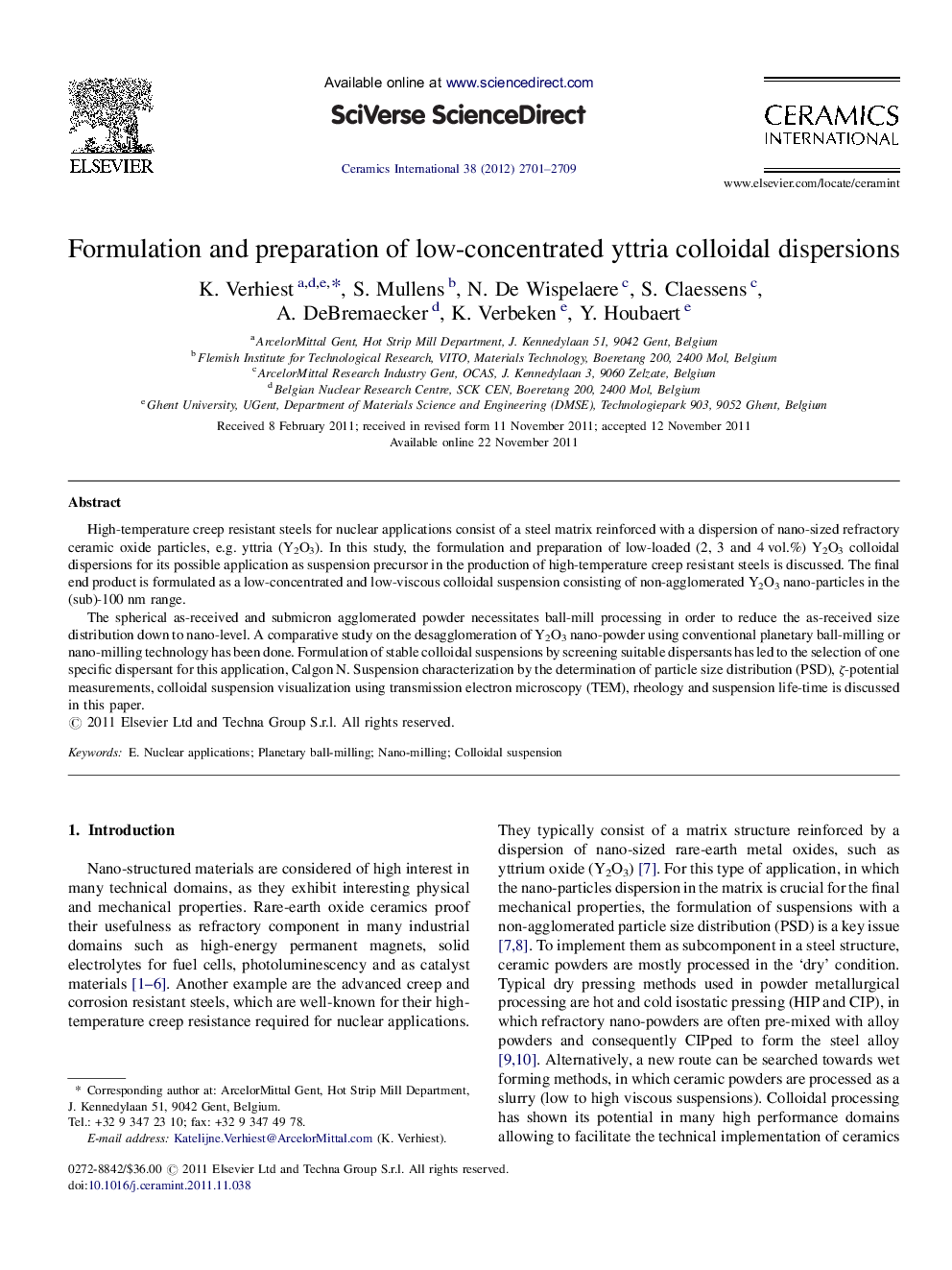| Article ID | Journal | Published Year | Pages | File Type |
|---|---|---|---|---|
| 1463541 | Ceramics International | 2012 | 9 Pages |
High-temperature creep resistant steels for nuclear applications consist of a steel matrix reinforced with a dispersion of nano-sized refractory ceramic oxide particles, e.g. yttria (Y2O3). In this study, the formulation and preparation of low-loaded (2, 3 and 4 vol.%) Y2O3 colloidal dispersions for its possible application as suspension precursor in the production of high-temperature creep resistant steels is discussed. The final end product is formulated as a low-concentrated and low-viscous colloidal suspension consisting of non-agglomerated Y2O3 nano-particles in the (sub)-100 nm range.The spherical as-received and submicron agglomerated powder necessitates ball-mill processing in order to reduce the as-received size distribution down to nano-level. A comparative study on the desagglomeration of Y2O3 nano-powder using conventional planetary ball-milling or nano-milling technology has been done. Formulation of stable colloidal suspensions by screening suitable dispersants has led to the selection of one specific dispersant for this application, Calgon N. Suspension characterization by the determination of particle size distribution (PSD), ζ-potential measurements, colloidal suspension visualization using transmission electron microscopy (TEM), rheology and suspension life-time is discussed in this paper.
